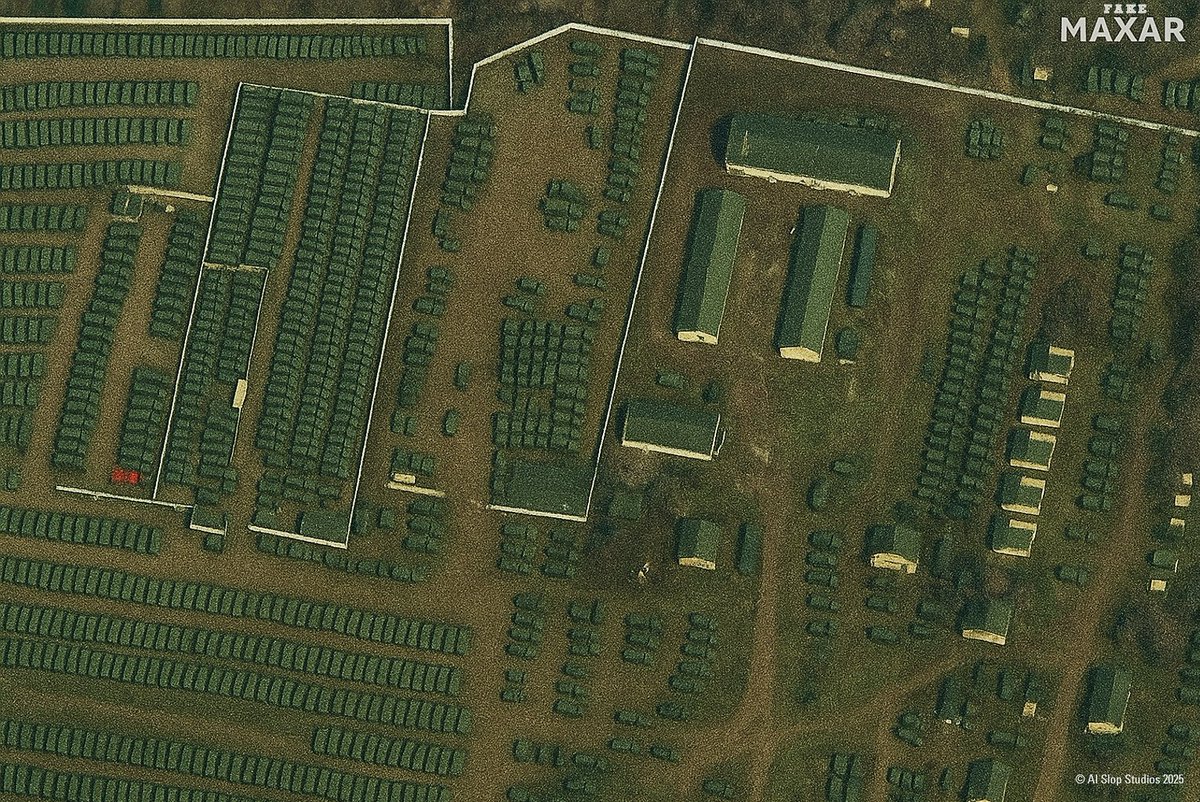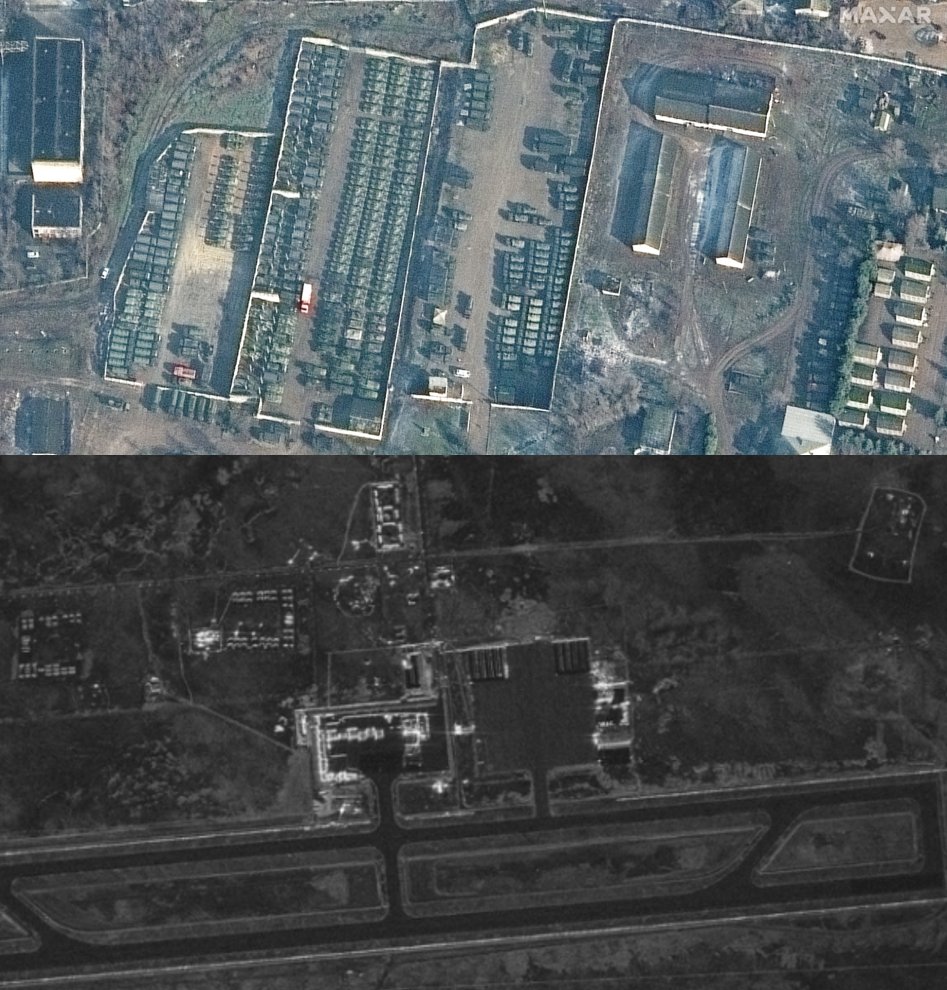The latest satellite images show 3 major developments: a large Russian troop buildup in Bryansk Oblast, damage from recent drone strikes in Kyiv, and unusual military activities at Taiwan’s Wangan Airport.
All three have one thing in common - they were generated by AI. 🧵Thread:
All three have one thing in common - they were generated by AI. 🧵Thread:

2/ While those who regularly work with satellite imagery or OSINT can quickly tell that something is "off," the quality of AI-generated satellite images is improving fast. As the number of convincing fakes grows, I've put together a few recommendations to help avoid being misled 

3/ In the case of the "Kyiv attack," it took just a single prompt on a free platform to generate the image. While it appears convincing at first glance, a closer look reveals clear geometric irregularities - distorted car shapes, and irregular windows and balconies on buildings 

4/ Similarly, a closer look at the "Bryansk build-up" image shows many geometric flaws. In the central part of the image, vehicle shapes often appear distorted - turning into cubes or misshapen rectangles. It’s also hard to identify what type of vehicles you’re looking at. 

5/ Another good method is to compare the claimed location with actual satellite maps. A quick check on Google Maps will show that area either doesn’t exist or is heavily distorted. In the case of the Bryansk image, the location shown doesn’t match any real place in the region
6/ Imagery generated to imitate Synthetic Aperture Radar, or SAR, can be trickier. Compared to standard optical satellite images, SAR is often more complex and inherently more "distorted", especially if you aren't used to work with it. Yet, the same rules still apply 

7/ Besides the problem with the helicopter blades, the lengths of helicopters in the same "class" don’t match. You can also compare them to other objects, like the "truck." A Russian Kamaz truck is about 7 to 8 meters long, while the Ka-52 helicopter should be twice long - 16 m 

8/ Now the task becomes more challenging. Take a close look at these two high-quality images — one optical, the other SAR, and try to identify at least three geometric inconsistencies or suspicious anomalies in each 

9/ We’re now reaching the most pivotal part of discussion - both images are original and made by Maxar and Umbra. In other words, there are no AI-made inconsistencies or anomalies here. If you spotted any or dismissed the imagery as fake, you flagged real images as false.
10/ And that’s precisely the problem — going forward, for every real image, there may be several convincing fakes. This risks eroding trust in satellite imagery altogether, making it easier to dismiss authentic visuals as AI-generated and undermining its value as evidence.
11/ To protect yourself, the best practice is to always verify the origin of the image. Companies like Maxar, Planet Labs, BlackSky, Airbus, or Umbra typically release imagery through their official channels, social media accounts, or via trusted journalists at major news outlets 

12/ Organizations like ours, Frontelligence Insight, purchase imagery from resellers and publish analyses under specific licenses or conditions. In such cases, trust depends largely on the organization's track record and transparency - credibility that often takes years to build
13/ To summarize: always refer to the chain of custody. A Telegram channel sharing the image is unlikely to be the source. A visual investigator from an outlet like NYT, BBC, FT, or The WaPo with direct press access to Maxar or Planet Labs is far more reliable
14/ This kind of scrutiny will only grow more important going forward.
If you found this thread useful, consider liking and sharing the initial post, or leaving a comment to help boost it in the algorithm
If you found this thread useful, consider liking and sharing the initial post, or leaving a comment to help boost it in the algorithm
15/ You can also support our work by following this account - we’ll be sharing more high-quality materials and investigations throughout the month. If you'd like to contribute directly, even a small donation via Buy Me a Coffee makes a difference: buymeacoffee.com/frontelligence
• • •
Missing some Tweet in this thread? You can try to
force a refresh







